
 |
Le Corbusier: Phenomenal Transparency. |
| "Phenomenal transparency might be perceived when one plane is seen at no great distance behind another and lying at the same visual direction as the first. Consequently, it was implied that among the causes of phenomenal transparency, there might be a preference for shallow space, or where such space was not possible, for a stratification of deep space." (Rowe and Slutzky) |
|
| Phenomenal transparency expanded: super-imposition of section over floor, iconography of indirect light |
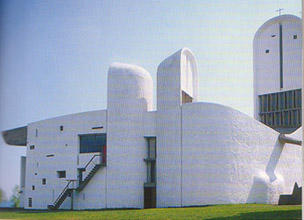 |
 |
|
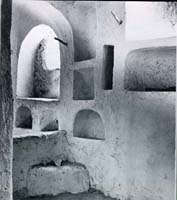 |
 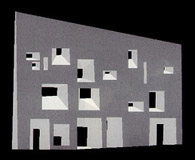 |

|
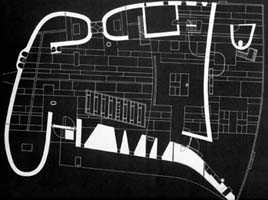 |
 |
|
"If one sees two or more
figures overlapping one another, and each of them claims for itself the
common overlapped part, then one must assume the presence of a new optical
quality. The figures are endowed with transparency; that is they are able
to interpenetrate without an optical destruction of each other.
Transparency however implies more than an optical characteristic, it implies
a broader spatial order. Transparency means a simultaneous perception
of different spatial locations." |
Symmetry as a means of organization is exclusive, subordinate and absolute; transparency as a means of organization places series of visual possibilities in relation toone another and throws them open. Transparency arises where there
are locations in space which can be assigned to two or more systems of
reference - where the classification is undefined and the choice between
one classification possibility or another remains open. |
 Mosq Architecture in Sahara is truly inspired by Dogon Design : The indirect Light from The Top of the Tower (Jean-Claude Bourdier in "African Dwellings") |
|
"Since the Dogon
arrived at Bandiagara Cliffs at least five or six hundreds centuries
ago, and since their resistance to Islam has been particularly strong,
it is not likely that
these three features [the niches or checkerboard
facade, the sanctuary pillars and the indirect system of lighting]
- whose symbolism remains integral to dogon cosmology
and its materialization through the house - are
the products of Islam's spread in West Africa. If the Islam in its spread southward inspired the preferential use of certain local architectural features, there was at the same time a northward movement of the black Sudanese populations, which made it possible to speculate on a West African contribution to the iconography of the North African built environment, such as thatof the Mzab region." |
 |
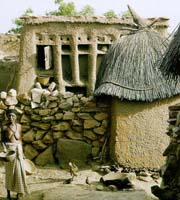 |
 |
| Dogon Checkerboard Facades | La Tourette Checkerboard Facade |
|
References: 1. Transparency - C. Rowe and R. Slutzky - Ed. Birkhauser - ISBN 3-7543-5615-4 2. African Dwellings - JP Bourdier + Trinh Minh-Ha - Indiana Press - ISBN 0-253-33043-2 3. Meaning in Western Architecture - Norbert Schulz 4. Architektur des Dogon: Traditioneller Lehmbau ... in Mali - Ed. Prestel-Verlag - ISBN 3-7913-1914-0 5. Precedents in Architecture - Roger Clark 6. Papyrus - Investigation on Phenomenal Transparency in African Architecture. |
| Le Corbusier in America | Modern Art | AFRICAN ART | Books | Support | Site Map |
 |